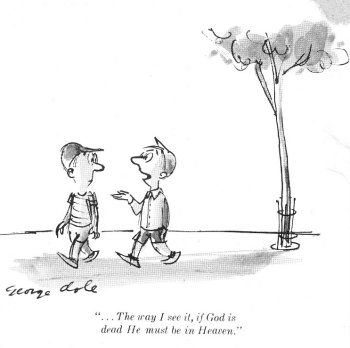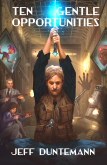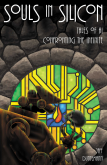- Well, I got the Mallo-Ware bowls I bought from eBay, and they were in better shape than they looked in the listing, and Dash has clearly busted his last bowl. Which leads to a thought: I used to prowl garage sales for entertainment, halfheartedly hoping to find something useful. (I once got a completely functional early-50s tube tester for fifty cents.) Now I just decide what I consider useful and go to eBay or Craigslist.
- Adobe’s Flexnet copy protection system evidently writes to the MBR, and thus can make a system unbootable if it gets in a wrestling match with something else that also wants to be there. Flexnet, in fact, looks disturbingly like a rootkit from here. If I wasn’t sanguine about moving up to Adobe CS before, I sure as hell don’t intend to now.
- Courtesy of Esther Schindler (who apparently was the editor who commissioned it) I give you a crackerjack tutorial by Tom Bunzel on how to do pivot tables in Excel.
- From the Words-I-Didn’t-Know-Until-Yesterday Department: A luthier is one who makes or repairs stringed instruments. From “lute,” which is one of the most ancient instruments in its class.
- Now that Apple has anointed the slate category, the usual suspects are coming up with their own surprisingly interesting takes on the concept. This is my favorite so far, and brings up the interesting question: Why not include both FM radio and TV tuners? If these things are to be travel toys, that’s a must-have. (I also want real GPS, not just cell-tower interpolation.)
- Here’s a list of 100 resolutions (102, actually) that anyone aspiring to be an Evil Comic Book Overlord should make. Resolution #2 is particularly important: “My ventilation ducts will be too small to crawl through.”
- My daily spam count felll significantly (about 30%) a few days ago, and I wonder if this had anything to do with it.
- Somebody told me about this years ago and I didn’t pay attention. I have one of these in a drawer. Will attempt when time allows.
- I used to call Hoag’s Object the “Here’s Looking At You, Kid” galaxy. I’m amazed that so few people have ever heard of it, or seen photos. You no longer have an excuse.
- If the chemical elements played rock music (or if rock bands were set up like the Metal Men) this would be their periodic table.
August, 2010:
Odd Lots
The Last Box
 We moved here from Arizona in 2003, and (as usual) it took us literally years to unpack everything. Some stuff was not meant to be unpacked, really–I left my vinyl collection and 8″ reel-to-reel mix tapes in boxes on the big shelf in the mechanical room, knowing they’d be there if I needed them but not actually expecting to need them. (I admit, I’ve gone looking in the boxes for a vinyl album a couple of times.) But there’s one box on the high shelf here in my office, containing stuff that was in odd places in my Scottsdale office, stuff that I wasn’t really sure where to put or what to do with. Every so often I sift through the box for an hour or so, trashing some stuff and filing some stuff and putting the rest of it back in the box. It’s only about 1/4 full now, so I guess I’m making some progress. It should be empty by the time I’m 80.
We moved here from Arizona in 2003, and (as usual) it took us literally years to unpack everything. Some stuff was not meant to be unpacked, really–I left my vinyl collection and 8″ reel-to-reel mix tapes in boxes on the big shelf in the mechanical room, knowing they’d be there if I needed them but not actually expecting to need them. (I admit, I’ve gone looking in the boxes for a vinyl album a couple of times.) But there’s one box on the high shelf here in my office, containing stuff that was in odd places in my Scottsdale office, stuff that I wasn’t really sure where to put or what to do with. Every so often I sift through the box for an hour or so, trashing some stuff and filing some stuff and putting the rest of it back in the box. It’s only about 1/4 full now, so I guess I’m making some progress. It should be empty by the time I’m 80.
One of the items was a favorite cartoon, from brilliant Maine cartoonist George Dole (George La Mendola) 1920-1997. Dole did a lot of work for the Saturday Evening Post, which is where the cartoon I show here came from. Year unknown; I’d guess the late 1960s. (The slogan “God is Dead” went viral in 1966, when it was the topic of a cover story in Time Magazine.) He did a lot of cartoons for both Playboy and the Wall Street Journal, which many of you probably didn’t realize even ran cartoons. (They do one each issue, in a well-hidden department called “Pepper…and Salt.”) Dole’s is one of only two cartoons that I would be willing to frame and hang on my office wall, and the other one is already there, signed by the artist. My copy is lousy, with one corner torn off, but I may frame it anyway, or perhaps photoshop it up a little and print it on new paper.
Oh, and the cartoon below, which goes back to 1973 and used to be stuck to my bedroom door when I was in college and writing unfinished novels with pompous titles like The Beast of Bronze. Does anybody here even remember the name of the strip? (I do–it’s a test for oldguyness these days.)

Other oddments include a piece of faded green paper on which I scribbled the information for the interview I had with Xerox in September 1974, which led to my first full-time job; business cards from Xerox, PC Tech Journal, and Turbo Technix; a deck of FORTRAN Hollerith cards containing a program I wrote in high school; and a small plastic stock of holy chrism that Bp. Elijah of the Old Catholic Church FedExed to me in 2003 when I was depressed over losing Coriolis, with the message: Anoint yourself and move on. Oh, and a broken Handspring Visor. Fan letters not from flounders. Several of those stupid lanyards that used to come with every single thumb drive you could buy. Uncle Louie’s discharge papers from the Coast Guard.
Things like that. Everything that would easily fit in one of my existing file folders is already there. (I now have one for “cartoon clippings.”) The rest of it, well, I just don’t know. I think everybody has a box of stuff like that, and there should be a good, terse word for the concept. I’m willing to hear suggestions.
At the Sign of the Green Cross

The closest retail cluster to our house (a mile and a half down the hill) has a fair number of vacant storefronts, but the last time Carol and I went down for lunch at China Wok, we noticed that the storefront right next to the restaurant was no longer vacant. Who had moved in was unclear: There was no big sign, and the small sign under the portico was painted over and blank. It looked like a doctor’s office: a couple of couches and chairs and some flower arrangements in a waiting room with a receptionist’s window. If I were hipper (and I am about as hipless as they come) the neon sign in the window would have given it away immediately: a green neon cross with orange letters in the middle, reading “OPEN.”
Fast forward a week or so. Carol was reading the free paper, and in the back were something like fifteen or twenty ads for medical marijuana dispensaries, including one in the Safeway Plaza. Yup. That’s it.
You’re probably expecting a tirade here, but alas, you lose. I’d paid little attention to the whole issue (let’s just say that I am not a potential customer) but a little research left me fascinated by the speed with which this all got going after a referendum here made Colorado one of the most grass-friendly states in the union. Suddenly it’s an industry, to the extent that somebody is manufacturing green cross neon “OPEN” signs that I doubt you’ll see in the window of a dry cleaners.
The green cross has become the informal symbol of the organized medical marijuana industry. I think this goes back to a primordial cannabis delivery service in San Francisco, which publishes an online menu and will bring the goods right out to you.
Is this a good thing? On the balance, probably. I am fiercely against depriving the ill of medications just because they’re psychoactive. Furthermore, I’ve read a lot of history, and prohibition just doesn’t work. All it does is enrich and embolden the bad guys. And although the one time I (successfully) smoked the stuff back in 1971 I felt depressed and creepy for days, I may not be typical, and feeling a little creepy is probably better than dying in agony or going blind. Certainly I was grateful for post-surgery painkillers when I had a hernia fixed, even though they made me feel stupid enough to enjoy “The Dukes of Hazzard” on TV.
The bottom line is this: The violence of our reaction to marijuana seems out of scale to its hazards. I know that it sounds like a cliche, but I’d rather see it regulated (and yes, taxed) and ideally merged in with the rest of our prescription drug distribution mechanism and treated no differently than chemicals like codeine.
Anyway. That’s just me; I’m easy. It’ll be interesting to see what happens to the place next to China Wok when some of my fussier neighbors figure out what they’re doing down there at the Sign of the Green Cross.
Odd Lots
- In my last very mobile couple of years, I’ve had some of my best ideas while driving across the featureless plains of Nebraska, including a way to solve a plot/tech issue that had prevented me from further progress on The Molten Flesh: How Protea sampled the powerful and very paranoid Sangruse Device. In looking back, this has been a pattern: In times of enforced boredom, ideas happen. Here’s some insight on that issue, which matters a lot to me, who loves ideas but loathes boredom.
- Here’s a very good tutorial on how to take photos of electronics projects, and by implication any small object shot for detail on a neutral background.
- The causes of “the French Paradox” (the French eat loads of fat and yet have little heart disease) have long been argued about, but it may simply be due to the fact that the French government makes sure that its pregnant women are well-fed, and has been doing so since the 1870s. (See next link.) Low fetal weight (often caused by poor maternal nutrition) correlates strongly to heart disease, diabetes, and much else later in life. Modern declines in heart disease may have nothing to do with red wine, dietary fat, or even smoking. Pregnant women may just be eating better.
- Sometimes a simple animation can explain a difficult mechanical mechanism. Hey, how many of you dudely dudes really understand how a sewing machine works?
- Grab a look at this bogglingly clear close-up of a sunspot, taken with an Earth-based telescope. The key is the deformable mirror and its overall mechanism of adaptive optics, which continuously corrects for atmospheric turbulence and other disturbing factors.
- Google’s spider evidently crawled Contra thirty seconds after I posted yesterday’s entry. Not complaining, but…how often does that damned thing come by?
- Here’s everything you’ll probably ever need to know about four-leaf clovers. It confirmed what I knew from experience probing our lawn in Chicago as a kid: five-leaf clovers also exist (I found more than one) even if they’re not as legendary.
- Double resistor color codes! So intense! What does it mean? (It means 230K.)
Dash and the Fruit Bowl Bomb Habit

All dogs have quirks, and Dash brought a new one into the house with him: When he’s done eating, he picks up his bowl and carries it around. He shows it to us, and if we don’t take it and re-fill it, he drops it from mouth height. When he was three months old (see photo above) he was closer to the floor, and the bowls sometimes survived. Now that his mouth is at adult bichon height, the bowls usually buy it.
In the photo above, Carol had just fed him, and he had bumbled into my office, standing in front of me with his bowl in his mouth, as if to say, “Please, sir, can I have some more?”
We feed the Pack out of a motley collection of small midlate 1950s fruit bowls, manufactured in an era when people ate less, particularly of the sort of fruit you got out of small cans in the 1950s. Such bowls are still made if not widely used, and we bought a couple of Corelle fruit bowls in our Shadow Iris pattern specifically for Pack meals. Supposedly they don’t break if dropped from modest heights. Dash hadn’t heard that, and when he dropped one, it exploded into dagger-like shards all over the kitchen. So the Corelle fruit bowls now await an era when we again embrace canned fruit cocktail (in heavy syrup.) They may wait awhile.
After we were married 34 years ago, Carol’s mom gave us a (mostly) complete set of Joni’s Dixie Dogwood tableware, and we used it for years as our everyday settings. A lot of it is gone now, having fallen from slippery hands at the sink or over the edge of the table, but because we rarely used the fruit bowls, we still had them until recently. That is, we still had them until Dash started dropping them.
He dropped another one yesterday, RIP (Rest In Pieces.)
The only bowls that are safe to give him are genuine Melmac, in our case Mallo-Ware, from Chicago’s now-extinct Mallory Plastics. Again, they came from Carol’s mom, and Carol used them when she was a kid. There are only two of the venerable #52 fruit bowls left, and both are usually in the dishwasher when another Pack meal time rolls around. I think there used to be more, but I don’t know where they went. Like all Melmac tableware they’re essentially indestructable, so they certainly didn’t break. I think I drilled and tapped one for a telescope attachment in the 80s. About the rest, clueless.
Even when the two Mallo-Ware bowls are clean, the problem is that we have four dogs, and after Dash scours out his own bowl, he will go hunting for other bowls to scour. The last one he finds gets carried around, and if it’s a Dixie Dogwood bowl, it’s soon off to rejoin Joni in Crockery Heaven.
So I slid over to eBay yesterday in search of more Melmac fruit bowls, to find that Mallo-Ware has become collectible. Used #52 fruit bowls now go for three bucks each…and up. I searched and grumbled until I found a pack of ten beat-to-hell pastel bowls for $25. That will certainly do the job, but…collectible Melmac? I hear Alf giggling somewhere.
I guess “collectible” is relative, and cyclical. As best I can tell, Melmac tableware was invented to prove to my Aunt Josephine that depression glass wasn’t so bad after all. Alas, Aunt Josephine didn’t get the message. She’d gathered an impressive set of iridescent orange depression glass while a teenager and used it well into the Fifties, but when Melmac came along, her depression glass was relegated to the kids table (and nobody got chewed out if it broke) with the adults dining on indestructable pastel plastic. To my aunt, depression glass was an emblem of poverty, whereas Melmac was totally Space-Age. Eventually the glass all went into the trash, which I suspect my cousins are now regretting.
There’s no real point to this essay other than a reminder that dogs are unpredictable. Mr. Byte used to chew up computer books, but only computer books. Chewy would dance on his toes for…peas. Jack will not eat raw meat, and will pick out the rice or the vegetables and leave the meat for Dash. QBit steals Carol’s ponytail Scruncis and hides them under the pillow in his kennel. I’m not sure these are mutant instincts, but they’re certainly not anything we taught them, and remain the best evidence I could cite that Behaviorism is really quite sincerely dead!
The Mutability of Immutable Decay
Boy, did this come out of left field: Something in the Sun alters the rates of radioactive decay of certain isotopes. Read that again, and slowly. You are in the presence of an exceedingly rare thing: experimental results that call into question something once thought to be about as settled as science gets.
To summarize for those in too much of a hurry this morning to click to the article: Scientists at Stanford and Purdue (hardly cranks or lightweights) have measured differences in the decay rates of certain short-lived radioisotopes. That’s boggling enough, given my own science education (granted, now 35+ years old) which indicated that decay rates were utterly immutable. But your boggler isn’t finished yet: The differences in decay rate appear to be synchronized to the period of rotation of the core of the Sun–33 days. So something the Sun is doing is influencing the timing of nuclear decay, way out here at just short of a hundred million miles’ distance.
Wow. Like, wow.
Because the core of the Sun is where solar neutrinos happen, the assumption is that neutrino flux is what does the job, as strange a notion as that is. Neutrinos are as close to nothing as things come without actually being nothing, and they can pass right through the core of the Earth without slowing down, much less hitting something two millimeters wide sitting on somebody’s lab bench. The effects are minute but measurable, and not an illusion. Somebody, somewhere (perhaps more than one somebody) is going to score a Nobel for this.
It’s too early to say much more, but I’ll put on my Scientific Wild-Assed Guesser’s Hat here and suggest that there’s another, more intriguing explanation: gravity waves generated by the rotation of the Sun’s considerable mass, particularly its core, where most of its mass lies. The rate of decay of radioisotopes might depend on the local curvature of space. If that curvature changes, as by a passing gravity wave, the rate may change. (Don’t ask for references here; I made it up on the spot and it’s nothing more than a wild speculation.)
The cool thing about this is that it might be testable, with patience and better instruments than we have right now. (Having a small black hole to play with would help a lot, but I won’t wait up for that.)
The Universe, my friends, is full of surprises!
Daywander
We’re at a dog show in rural Greeley, Colorado, a little north of Denver–and right smack dab next to a huge cattle feedlot. Now, I’m a caveman and a realist–manure is the price we pay for beef–but that stuff sure do stack up and make its presence known. We kennelled QBit and Aero to simplify show logistics, but it’s funny not having Aero with us at a show. He’s a champ now, and the spotlight has shifted to Dash, who at 15 months already has 11 points (of the required 15) and one major win (of the required 2) toward his own championship. Aero was always a shy dog, and fearful at the outset. This cost him points early on, but Dash has never had any such problems, and it’s (remotely) possible that he could score a big enough win this weekend to make him a champion while still technically a puppy. (He won’t reach his majority until 18 months.) Master groomer Jimi Henton will be helping Carol make him and Jack look their best, and we have high hopes.
I just finished a dozen Lucerne eggs and I’m still alive to write about it, so the big contaminated egg thing may not be as horrible as some are making it out to be. But half a billion eggs, sheesh–and that from one company. Am I going to give up eggs? Hardly. My sole gripe is that Lucerne’s are the only eggs I can find locally in Medium, and I’ve titrated myself to a pair of Medium eggs scrambled for breakfast as what best carries me until lunchtime without any energy lapses. So I may have to fall back to a single Extra Large until I can scare up a different brand of Medium eggs. And while eggs are on the table here, does anybody see size Small or Peewee eggs sold at retail? (As best I know, these are generally sold to food producers for cakes and such.)
I bought and have been tormenting a new-ish WYSIWYG EPub editor product called Jutoh, from the guy who gave us the free ECub editor. It’s available for Windows, Linux, and Mac, and I’m testing it under Windows and Ubuntu. My first impressions are generally good, though the product still has a couple of thin spots, foremost of which is an inability to import .DOC files. More on it once I have a chance to get a couple of projects through it.
It may sound odd, but I’m pleased that Jutoh is not free software. It’s only $22, which is trivial–I’ve spent more than that just having an indifferent lunch with Carol at Village Inn. I don’t want to see the category of inexpensive commercial software die out. For a long time it seemed that software was going to cost either zero or a thousand dollars, which would mean that few solo software geeks would attempt to field an innovative utility that would not sell for hundreds but might sell for tens. I bought Atlantis some time back for $45 and love it–it generates the best EPubs of anything I’ve tried so far. (Jutoh is still in the running, but the race has barely begun.) Free software can be superb but all too often evolves slowly, if at all. Zoundry Raven, on which I write this, hasn’t been updated since 2008…though I must balance this by citing the free ebook manager Calibre, which is updated every couple of weeks.
We have lost the Star Hustler. Jack Horkheimer has gone off to see what the stars look like from the other side, and as little as I saw of him (I’ve not watched much TV in the last 40 years) I will say that he did a spectacular job making observational astronomy compelling to ordinary people, especially young people–and as goofy as he seemed sometimes, he never made me want to kick his teeth in, as all too often happens with Bill Nye. Science should not be full of itself (nor, alas, full of something else, as is the case far too often) and Jack was not. Keep looking up…maybe you’ll spot the light of the Big Bang glinting off the top of his head.
Odd Lots
- The hat size/shape measuring gadget that I mentioned in my entry for August 11, 2010 is called a conformateur, and here’s a whole bunch of pictures. It’s evidently a lot commoner than I thought, still in use, and works spectacularly well.
- And another kind of Fedora anxiety: I accidentally installed OpenSuse 11.3 over my Fedora 13 instance yesterday. Might be a good trade; nothing irreplaceable was lost with Fedora, and I need practice in KDE 4 more than I need practice in GNOME.
- A new, pre-shrunk iPad may be in the chute: 7″ diagoinal display but the same pixel resolution. Will fit in a smaller pocket, and may well render ebooks just as crisply. We won’t know until it happens. If it happens. But if it doesn’t happen, Apple will be way dumber than they look.
- Worry less about hurricanes, at least this year: Accumulated cyclonic energy (ACE) is at a 30-year low and still falling. ACE is a good proxy for hurricane number and strength (look at 2005 on the graph) so while it’s low, breathe deep and take that tropical vacation you’ve been putting off.
- This guy gets on my nerves sometimes, but he nailed it: We may someday create software that does much or most of what the human brain does, but we will not do it by reverse-engineering the human brain, at least the way that Ray Kurzweil thinks we will. (For a more detailed popular treatment of why the genome is not a deterministic description of anything, see Matt Ridley’s The Agile Gene.)
- There’s something very likeable about this Icelandic proposal to build high-tension towers in the form of skeletal human beings. Most of the ones I see here in the US look like angry bull heads–and all absolutely alike–so this would be a huge improvement of something huge that has long needed improvement.
- I see this little guy in sheet music fairly regularly, but never knew what it was until I hunted down this summary of just about all modern musical notation symbols. The symbol in question is called a fermata, but would you know a segno if you saw one? (Or, better yet, a hemidemisemiquaver?)
- What do vegan zombies crave as they stalk about like undead celery? Grrrainnns!
Rant: Higgsism and the Moral Dimension of Health
As most of you know (or can guess) I’m not content to accept received opinions about things like health insurance reform. I’ve been researching it and working it out for myself for a couple of years now. Most of the discussion online has been tribalist bullshit and not particularly useful, but I’ve managed to define a few things that make the whole issue of health insurance a lot harder to deal with than otherwise might be. What surprises me the most is that these issues almost never come up.
The first of these, in fact, I had to coin a name for: Higgsism, from the clueless protagonst of Samuel Butler’s wicked little gem, Erewhon. If you recall, while Higgs is jailed in Erewhon, he befriends his keeper’s daughter, Yram. Higgs watches, astonished, as people who fall into bad health are convicted of a criminal offense, yet people who have been caught embezzling are treated as though they were suffering from a headcold. When Higgs himself gets a headcold, Yram scolds him severely, and only at that point does he put two and two together. As poor Higgs puts it: “I never remember to have lost a cold so rapidly.”
It’s a great book; a sort of steampunk Gulliver’s Travels, and bears close reading. In a nutshell, what I call Higgsism is this: the belief that we have complete (or almost complete) control over our health, and that when we get sick, it’s because we have done something wrong, making illness our own damned fault. Just as the lucky prefer to ascribe their success to hard work, the healthy generally ascribe their health to pure clean livin’.
Alas, the more we look, the more evidence we see that health is more luck than skill. Matt Ridley’s 2004 book The Agile Gene describes the emergent nature of the human body, and how we’re at the mercy of not only our genes but also poorly understood environmental stressors of gene expression that come into play starting at the moment of conception. Beyond avoiding a handful of obvious hazards like smoking, recreational drugs, and promiscuity, there’s not a whole lot we can do. Eat moderately, walk a little, and get your sleep–but hell, if body weight is almost 80% heritable, health may be a steep climb indeed.
I’ve lived long enough to see a fair number of people die for no known reason. A healthy, trim, athletic nonsmoking man like Harry Helms with no family history of colon cancer dies of it. What did he do wrong? Carol’s late Aunt Berenice lived a modest life and never held a lit cigarette, yet she died of lung cancer. What did she do wrong? The truth is that they did nothing wrong at all. Yet these days, when somebody gets cancer, everybody starts thinking back to try and identify what the poor slob’s sin was.
The truth is grim: We control little of our own health, and what little we do control is often misunderstood (like carbohydrate metabolism) and not always universally applicable across the human species. (Milk is great for you–if you can digest it.)
The health insurance industry can only get away with medical underwriting because of the implied moral culpability of the unhealthy: If you’d just lived a cleaner, healthier life you wouldn’t have cancer or diabetes or ALS or whatever, so you’re a poor risk and deserve to go bankrupt and die. This widespread belief is why high-deductable catastrophic health insurance is unpopular: People see it as money going out of their pockets directly into the pockets of heedless reprobates who can’t or won’t adopt a healthy lifestyle, whateverthehell that is, while those who practice clean livin’ still have to pay for their own broken ankles and flu shots.
As long as we continue to believe that, we’ll be unwilling to face the truth: Health insurance is a sort of luck tax. The lucky pay the money while getting little back in terms of benefits. The unlucky get their lives saved through expensive treatments that they could never afford out-of-pocket. The moral dimension of health is almost entirely an illusion.
What’s the solution? I didn’t say I knew of one; in fact, I’ve often wondered if universal health insurance as we understand it is even possible. Yet even if it is possible, as long as we embrace Higgsism, I guarantee you we’re not going to get anywhere with it. You might as well give antibiotics to embezzlers.
There’s another part to this, which I’ll try to get to in coming days.
Redeye-ing the Perseids
Just a quick reminder: The Perseid meteor shower should peak tonight just before dawn, so if you can manage to haul outside between three and four ayem you are almost guaranteed to see some interplanetary grit hit the fan.
Look east, but pay attention to your peripheral vision, because the meteors can appear in any part of the sky. If your skies are good you might well see one every minute or so, and sometimes they come in bursts. And there’s always that long-shot hope of catching a bolide.
I’m about shot for tonight, but I will draw your attention to a previous entry I did on the Perseids, which are something of a tradition for Carol and me. (It also contains my now-legendary 13-line sonnet on the meteor shower, which demonstrates that I am neither poet nor mathematician.)
Take the Off! with you, especially if you live in Chicago. Trust me on that one.











